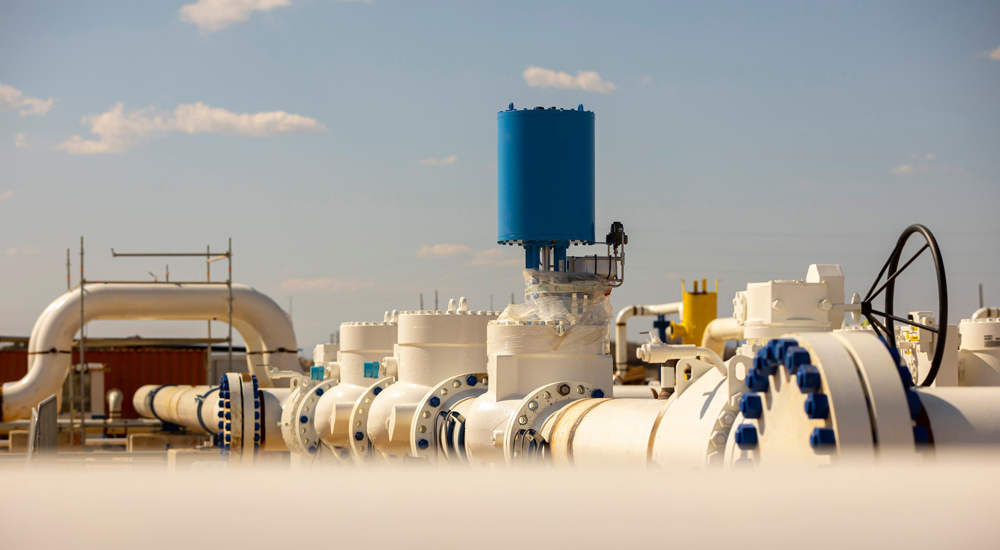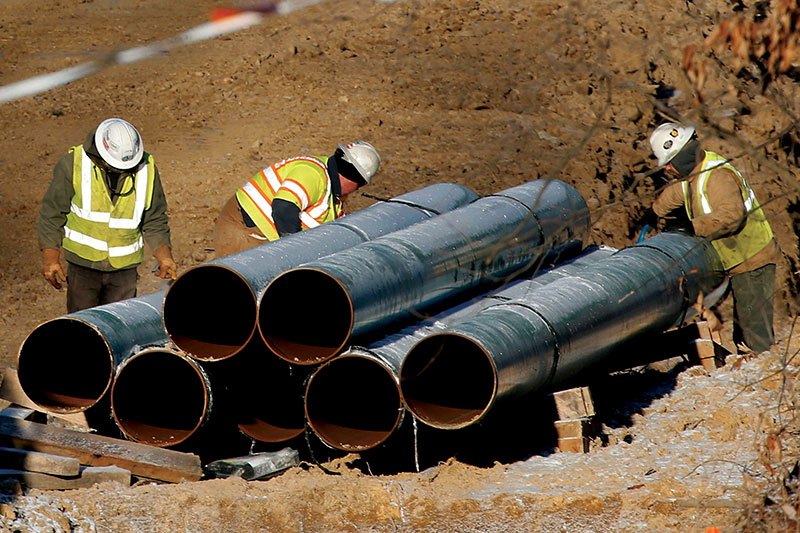May 2023, Vol. 250, No. 5
Features
Marcellus Bottlenecks Continue to Muddy the Picture
By Michael Reed, Editor-in-Chief
(P&GJ) — It has gotten to be a familiar yet no less frustrating story for midstream operators in the Marcellus-Utica region: pipeline takeaway capacity remains bottlenecked and production from the gas-rich region continues to stagnate.
Even at that, though, the implications of the United States cutting itself off from a gas resource that could be produced relatively cheaply may still be underestimated significantly.
Most recently, the lack of shipping options has to some extent left the Marcellus high and dry, while producers in the Haynesville Basin of Northeast Texas and Louisiana, and the Permian Basin of West Texas and New Mexico, have stepped up production to meet surging demand from Europe, in the wake of the fallout from Ukraine.
“We continue to see policymakers in New York and elsewhere pushing the narrative that growth in wind and solar, alone, can meet the needs of a fully electric world, including for winter heating in cold climates … without sacrificing affordability and reliability,” David Bauer, president and CEO of Diversified National Fuel Gas Co., said during a fourth quarter earnings call. “The gap between aspirations and reality is remarkable.”
Nonetheless, amid fluctuating gas prices, the Marcellus and Utica shale of Pennsylvania, West Virginia and Ohio was still expected to produce 34.95 MMcf/d in April, according to the U.S. Energy Information Administration (EIA), a number which would represent a modest 75,000 bdp gain, year-over-year.
Slow Movement
Even though, based on EIA data, natural gas pipeline capacity out of the northeast has grown every year since 2014, the rate of increase has slowed and in recent years failed to keep pace with increases in regional production.
To illustrate how difficult it has been to get shovels in the ground (or in some cases, keep them there) during the past six years, five major pipeline projects that were designed to ship Appalachian gas to East Coast markets have been canceled, for the most part due to regulatory impasses and associated costs:
- Constitution Pipeline, which in theory now should be transporting gas from fracking operations in Pennsylvania to the south of New York state, was halted by developer Williams Companies, which cited years of delays that placed “underlying risk” on the project’s potential return on investment.
- Northeast Supply Enhancement pipeline, canceled in May 2021, due to protests and legal challenges.
- Atlantic Coast Pipeline, the multistate 600-mile (965-km) pipeline, was canceled in 2020, with developers citing recurring litigation, permitting uncertainties and mounting costs.
- PennEast Pipelines was canceled in late 2021 by developers who blamed lingering legal and regulatory hurdles.
- Pilgrim Pipelines, designed to ship up to 200,000 bpd of fracked crude oil from New York to New Jersey, was abandoned in 2017.
In all, these cancellations amounted to about 930 miles (1,498 km) of interstate pipeline across the northeast, including about 450 miles (725 km) within New York.
“The limited growth from the Northeast is really a function of takeaway constraints rather than resource issues or the economics of wells,” Steve Diederichs, Enverus senior vice-president of intelligence,” told Petroleum Economist. “And we do not expect significant relief until the Mountain Valley Pipeline comes online at our target in-service date of late 2024.”
Better Days?
There have been a few bright spots lately. Among those, the Biden administration’s determination that restarting construction on the 303-mile Mountain Valley Pipeline (MVP) will not significantly jeopardize rare fish and other endangered species along its right-of-way.
The decision allowed developers to clear a major hurdle that blocked completion of the project. As a result, the U.S. Army Corps of Engineers and the U.S. Forest Service, which are required to consult with the Fish and Wildlife Service regarding how projects will impact endangered species, are expected to finalize those approvals, possibly before summer.
The bulk of the unfinished portions of the pipeline either cross streams and rivers or go through the Jefferson National Forest in Virginia, and building in those areas requires federal permits.
Equitrans Midstream and NextEra Energy, the joint developers of the project, say it is 94% completed. In the case of MVP, the Federal Energy Regulatory Commission (FERC), which regulates interstate natural gas pipelines, first issued a certificate of public convenience and necessity for the pipeline back in 2017, but in August found itself extending construction deadlines until 2026.
In another positive development for midstream, the Pennsylvania Department of Environmental Protection (DEP) recently issued permits for the construction and operation of Transco’s Regional Energy Access Expansion Pipeline project.
This expansion of the company’s existing pipeline will transport natural gas from the Marcellus Shale in northeastern Pennsylvania, through seven counties in Northeast and Southeast Pennsylvania.
The pipeline will provide an incremental 829.2 MMcf/d of natural gas capacity and require of new pipelines, a new gas-fired turbine driven compressor station and modifications to existing pipeline tie-ins, along with the addition of regulation controls at an existing valve setting.
Appalachian Paradox
New York state, in particular, has been a difficult place to build pipelines, a situation that intensified during former-Gov. Andrew Cuomo’s administration and continues under current Gov. Kathy Hochul.
Due to regulatory hurdles and lengthy court battles, pipeline companies have not built pipeline capacity needed in the region.
The resulting lack of pipelines continues to necessitate the Northeast United States to import LNG from foreign producers to meet its natural gas demand. It is an ironic development considering the Appalachian Basin, as a lone entity, potentially could have been the third-largest natural gas producer in the world during the first half of 2021, behind Russia and the rest of the U.S.
Meanwhile, crude oil production in the Marcellus shale is expected to reach pre-pandemic levels in 2022 and increase further through 2025, while analysts feel crude oil production in the Utica shale is unlikely to recover by 2025.
Separately, in an ongoing effort to consolidate its holdings across the Marcellus, gas producer EQT Corp. agreed to take over THQ Appalachia I in a $5.2 billion deal struck in September. The purchase includes Tug Hill’s XcL Midstream LLC, which owns 95 miles of gas pipelines with interstate system tie-ins.
Earlier, EQT had acquired assets from Alta Resources Development for $2 billion and bought Chevron assets in Appalachia for $735 million in 2020.







Comments